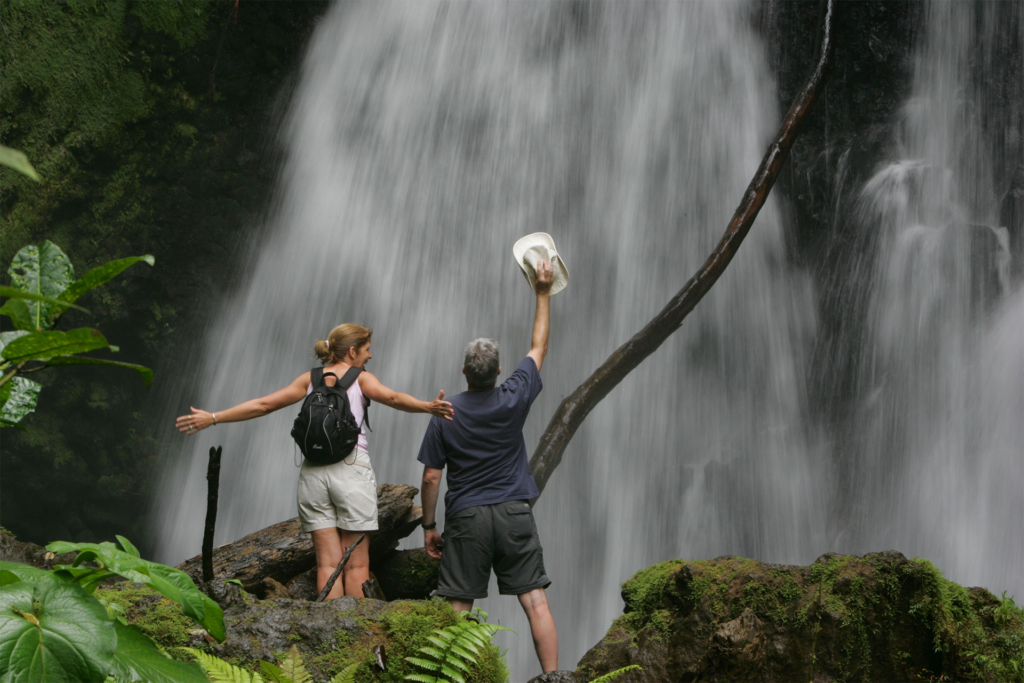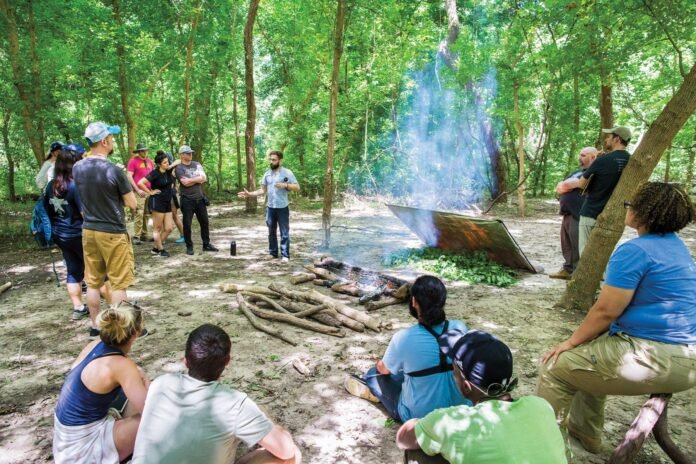In the presentation, you will capture the viewer’s eye by highlighting the appeal and difficulties of the backwoods wild.You’ll emphasize the importance of being prepared with essential survival tips to navigate this environment successfully. This section sets the stage for the rest of the blog post by previewing the key topics that will be covered.
1. Understanding the Forest Environment
Characteristics of Forest Environments:
Begin by describing the physical properties of the wood environment. Pack dense tree cover that blocks the sun, creating a shady and often sticky environment on the understory. Mention the presence of foliage, including bushes, ferns, and other vegetation that may obstruct visibility and make navigation difficult. Emphasize the thick and sometimes dense nature of vegetation, which can slow growth and increase liability to wastage.
Varied Terrain:
Next, explore the diverse terrains set in woodland environments. Woodlands can span a range of geographies, including mountainous, dense, barren, and aquatic. Bandy how this terrain can affect travel routes and navigation, the steep inclines and rugged terrain are presenting fresh challenges. Emphasize the importance of adapting to the terrain and choosing appropriate routes based on your physical abilities and clothing.
Wildlife Diversity:

Forest are home to a diverse array of wildlife, from small mammals and catcalls to large bloodsuckers such as bears and mountain napoleons. To understand the importance of fearing woodland wildlife and understanding their behaviour. Mention potential losses associated with wildlife disturbances, such as accidental encounters or attacks. Encourage compendiums to look for wildlife species in the area they plan to visit and learn how to respond to problems.
Challenges and Hazards:
Conclude this section by recapitulating the challenges and threats faced by timber regions. Reiterate the importance of preparation and caution when exploring nature. Remember the Compendium to be aware of implied risks such as disappearances, wildlife encounters, adverse rainfall conditions, and natural obstacles. Emphasize the need for alertness and respect for terrain to ensure a safe and enjoyable outdoor experience.
2. Preparing for Forest Survival
1. Stress the importance of proper preparation:
Before venturing into the woods, it’s important to stress to your customers the importance of being adequately prepared. This planning can greatly impact their ability to deal with unexpected situations and crises that may arise.
2. Provide a checklist of essential items:
One of the most down to earth ways of planning for woods endurance is by guaranteeing you have all the fundamental stuff and supplies. In this piece of the blog entry, you’ll need to offer perusers a far reaching agenda of fundamental things to pack.This checklist may include:
- Navigation tools: Compass, map, GPS device
- First aid supplies: Bandages, antiseptic, pain relievers
- Emergency shelter materials: Tarp, emergency blanket, cordage
- Signaling devices: Whistle, mirror, signal flares
- Food and water: High-energy snacks, water purification tablets
- Clothing: Waterproof layers, sturdy boots, hat, gloves
3. Navigation Techniques in the Forest
1. Explain basic navigation techniques:

Start by explaining fundamental navigation techniques that are applicable in forest environments. These may include:
- Using a compass and map: Show users how to orient themselves using the compass and guide. Understand concepts such as studying geological guides, deciding on cardinal bearings, and locating them.
- Recognizing natural landmarks: Check out how to distinguish common landmarks such as mountains, waterways, and rock formations. These tourist spots can serve as route references.
- Using the sun’s position: Explore how the Sun’s position can be used to determine course. Show users how to find east and west using shadow length, the sun’s development during the day, and the sun’s path.
- Observing terrain features: Help explorers understand terrain elements such as slopes, valleys, and ridges to explore successfully.
2. Discuss alternative navigation methods:
In addition to traditional navigation tools, discuss alternative methods that can be useful in forest environments. These might include:
- Celestial navigation: Teach readers how to use the sun, moon, and stars to determine direction, particularly if they find themselves without a compass or map.
- Using natural navigation cues: Explore how elements like moss growth on trees, prevailing wind direction, and animal trails can provide clues about direction and terrain.
4. Shelter Building and Fire Starting
1. Highlight the significance of shelter:

In rugged jungle conditions, the core is fundamental to protecting yourself from the elements, maintaining internal heat levels and conserving energy. Emphasize to your users the importance of focusing on building core almost immediately in their endurance efforts.
2. Offer step-by-step instructions for building emergency shelters:
Give your users reasonable direction on the best way to create a variety of crisis covers using the materials seen in Timberland. Some common types of shelters suitable for backwoods conditions include:
- Shelter cover: A basic sanctuary built by resting branches or logs up against a tough tree trunk or ridgepole.
- Flotsam and jetsam cover: A more significant sanctuary worked by stacking layers of leaves, branches, and other woods garbage against a system of sticks or branches.
- A-outline cover: A three-sided formed cover worked by inclining two long branches together and getting them at the top, then covering them with foliage or a canvas.
3. Discuss safe methods for starting a fire:
Safe methods for starting a fire in the wilderness are essential for survival. Gather dry, dead wood for fuel and create a fire lay to promote airflow. Use reliable ignition tools like waterproof matches or a ferrocerium rod, and always prioritize fire safety to prevent accidents.
5. Water Sourcing and Purification
1. Identifying Water Sources:
Discuss the various water sources that can be tracked in backwoods conditions, including rivers, waterways, lakes, ponds, and streams. Advise users to exercise caution when selecting water sources, as not all may be safe for consumption due to anticipated contamination from microorganisms, parasites, or contaminants.
2. Techniques for Water Purification:
- Boiling: Explain the most common method of water bubbling to kill harmful microbes. Encourage users to hold water for less than a moment (or at higher altitudes) to the moving bubbler before allowing it to cool before drinking.
- Filtration: Examine the use of simple water channels or cleaning frameworks to eliminate microbes, protozoa, and different contaminants from the water. Suggest choosing channels with small enough pore sizes to capture minute organics.
6. Foraging for Food in the Forest

1. Discuss the importance of finding food:
Begin by clarifying the meaning of nutrient traceability for food under endurance conditions. In timberland, where access to formal food sources may be restricted, knowing how to identify and collect wild food items may be essential to maintaining energy and nutrition.
2. Highlight seasonal availability and locations:
Talk about the occasional accessibility of wild edibles in the timberland, as well as the particular natural surroundings where they are probably going to be found. Give data about the best seasons to search for various sorts of wild food varieties and the biological systems they occupy, whether it be backwoods clearings, stream banks, or forest edges.
7. Wildlife Awareness and Safety
Here, you’ll address the expected dangers of experiencing natural life in the timberland and give tips to limiting these experiences and knowing how to answer whenever went up against by risky creatures. Understanding natural life conduct and knowing how to respond can assist perusers with remaining protected in the wild.
Conclusion
Finally, you’ll summarize the key endurance points covered in the blog entry and reiterate the importance of paying attention to fitness and preparation when exploring the backwoods. Likewise, you’ll encourage users to share their own encounters and additional ways to do duty in the woodland.



